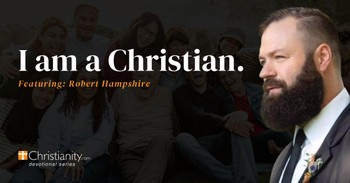[Editor's Note: The following excerpt is from Teaching the Faith, Forming the Faithful: a Biblical Vision for Education in the Church, chapter 11 "From Generation to Generation" by Gary A. Parrett and S. Steve Kang, Used by permission of InterVarsity Press.]
In recent decades, we have witnessed a trend toward age segmentation in many North American churches. A family may drive to the church facilities together on Sunday morning, but after arriving, it is likely they will immediately disperse according to age. The children will be off to the "children's church" or to Sunday school classes, and parents will find their way into the main sanctuary for a worship service. In some cases, teenagers may head in still another direction to experiences ministries that are specially designed for them. An hour or two later, the family reconvenes for the ride back home.
Something similar may occur later in the week, perhaps on a Wednesday evening, when, on their arrival at the church facilities, the family members go their separate ways again for their various activities.
The segmentation is also apparent in the hiring practices of many churches. A new staff member assumes the role of "children's pastor," while another couple ministers to the "thirtysomethings." It is increasingly rare that a growing church with an expanding staff will hire a "minister of Christian education" with educational oversight that crosses the generations or a pastor of congregational life and growth who will coordinate the formational education of the whole congregation. Far more likely, the church will hire staff for specific assignments to a specific age group in the congregation. The church may gather for an annual "family retreat" at some point in the year. But once again, that may mean little more than a long car ride together before the family members go their separate ways.
Of course there are benefits from such approaches to ministry. If one is charged to teach or preach to middle-schoolers—and nobody but middle-schoolers—it will likely prove easier to craft a message or discussion that is developmentally appropriate and culturally suited to the audience. It is certainly a harder task to prepare and present a teaching or sermon for an audience that features listeners who may range in age from four to ninety-four.
An extension of this segmentation is evident when churches move toward multiple worship services with different styles of worship for each. It is not too surprising in such churches to see that one service may be attended predominately by younger members of the church with older members mostly attending another service. Again, planning a worship service for a more particular audience is often easier than trying to be sensitive to the needs of a diverse congregation.
With a view to evangelism, it has long been argued that such particularizing of ministry to meet the needs of a very particular audience is especially helpful in terms of reaching people who are not yet believers. This is a sort of application of the so-called homogeneous unit principle that has long been associated with the modern church-growth movement. Whether the matter is difference in age or in race, difference in socioeconomic status or in educational background, it seems easier to "reach people for Christ" if we have a specific group of people in mind. This evangelistic burden can affect nearly everything about how a congregation chooses to "do church"—from the music in worship to the approach to preaching to the structuring of discipleship ministries, and much more. Most congregations, at least at times, make decisions along these lines of thinking.
There is a legitimate question about how much all of our trends toward such practices in the church are mirroring larger cultural trends. Many have written about how, for example, the marketing world has driven the development of "generational" consciousness within American society. According to some, generational differentiation in the United States is largely the invention of Madison Avenue, reflecting an attempt to create marketing niches and fads to boost sales. "Generations," which were typically grouped into forty-year windows in Bible times, were reintroduced several decades ago in North America, now segmented into twenty-year windows as "builders, boomers, busters and millennials." Now, due to the rapid pace of changes in society, there are often subcategories conceived within each generation. Among the millennials, for instance, are Generation Z, homelanders (born between 1990 and 1996) and Generation I, the Internet or Net generation (born between 1996 and 2006). See, for instance, Neil Howe and William Strauss, Millennials Rising: the Next Great Generation (New York: Vintage, 2000). Have churches simply learned from the marketplace that you need to know your audience and target that audience with whatever it is you are trying to sell?
Aside from the pragmatic questions involved in all this, there is also the matter of biblical fidelity. What are the mandates and the models of Scripture regarding intergenerational life and ministry in our churches? For some, the question may simply be answered by sweeping it under what are perceived to be larger concerns. Surely, some will argue, the overriding concern of the church must always be to reach as many people as possible for Christ at all cost. But what does it mean to reach people for Christ? Are we to reduce this to simply a concern for evangelism. As was noted in chapter two of this book, the goal of our teaching must embrace "teaching them to obey all I have commanded you." The goal of our ministry is making disciples of Jesus. Thus it is not enough to ask merely about how we can "reach" people. Attentiveness to this goal may well help us succeed in getting people to come. But what manner of people will they become if our philosophy of ministry is dominated by catering to personal and generational preferences?
Without full commitment to holistic and intergenerational discipleship as a congregation, the church will likely become like a revolving door—people coming and leaving based on their satisfaction level: how their needs and preferences are addressed and met. During the period they stay at a church, they remain "consumers" merely occupying the pews as passive Christians. They feel satisfied with what they are getting, which likely means that they are affirmed by the church leaders as precisely the targeted population of that church. The problem is that they then translate such messages to mean there is no need to change or grow in Jesus Christ any further. When they are "pushed" to examine their lives and change their ways in the Lord, they can always pack up and venture into another church that would welcome them "just as they are." So the great migration cycle continues.
Unquestionably, ministry that is intentionally aimed at particular audiences can be very fruitful. It is a wise church that seeks to make its ministries culturally congruent for the realities of its congregants. This means we must pay attention to all aspects of the cultural milieu that continue to shape both our members and those outside the church whom we are seeking to serve. Developmental realities and generational issues are a large part of such attention, and we certainly must try to minister in age-appropriate ways.
Yet many churches seem to have gone overboard in this regard, structuring all, or nearly all, their ministries with this issue of "age appropriateness" in mind. We really should call the very term into question in certain respects. Is it not "age appropriate," after all, to have significant interaction with persons of other ages within one's family, church and community? Whatever gains there may be in approaching ministry along this age-segmented path, however, we must recognize that there are significant corresponding losses. For one, children lose the opportunity to be with adults in worship, to learn by example what it means to pray, praise, listen, partake. As I worship in my own congregation, I am often watched very closely by babies in their parents' arms, by toddlers and other young children. They watch me as I sing to the Lord and as I listen to the preaching of the Word. What are they thinking as they watch? I have no idea. But I am glad they are watching, and I pray that such a seemingly small matter will bear kingdom fruit one day.
We are called to live as a "congregation," a local gathering of the family of God and the manifestation of the kingdom life. This means that we are called to model for one another how we are to live as a kingdom family in the context of the various aspects of life together: prayer, worship, teaching, service and so on. This can happen only when we submit ourselves to one another across generations, genders, socioeconomic status, ethnic and racial "differences," and so on. These differences should be construed as openings or opportunities through which we can create space for God to transform us as a kingdom family. More often than not, when we live in the "silos" of our differences, we end up truncating the Gospel according to the perceived needs of the group and creating a set of standards the group needs to conform to in order to be part of that group. At the same time, these silos need to be recognized, celebrated and even strengthened. This is not, however, for the purpose of being comfortable with those who share similarities and familiarities that are often socioculturally constructed for them. Instead, it is for the purpose of deciphering together how they are to build one another up in the church, by listening, equipping, serving, teaching and so on, as partners in God's ongoing transformational work in the family of God and beyond.
Just as important, of course, the adults in the congregation need to see, hear and be with the children. We have much to learn from those younger than us. Jesus evidently thought that this was so. On one occasion, when his disciples were (once again) disputing among themselves about who would be greatest in the kingdom of God, Jesus had a young child stand in the midst of his disciples and taught them that they needed to learn from this young one and, indeed, needed to become like him (see Mark 9:33).
Many adult worshipers seem to think that children will be a distraction to real learning and worship—for themselves, for the preacher or teacher, or for both. The disciples thought this way, at least on one occasion. They rebuked a group of mothers who wanted to bring their babies (Luke 18:15) to Jesus to receive a blessing from him. When Jesus saw the disciples' actions, "he was indignant. He said to them, ‘Let the little children come to me, and do not hinder them, for the kingdom of God belongs to such as these." Here again, he told his disciples that they had much to learn from such children (Mark 10:13). The attitude the disciples displayed on this occasion seems to have mirrored the broader culture. We recall the episode some time after this event when the religious authorities asked Jesus to quiet the children who were shouting their hosannas upon his entry to Jerusalem. But Jesus rebuked those who rebuked, and he warmly welcomed the children and their praise (see Matthew 21:15).
Jesus' attitude toward children mirrored not the culture at large but the heart of his heavenly Father. A straightforward reading of the Scriptures reveals that God's heart for them is much more open than ours very often are. Children are at the center of his attentions, not at the periphery. Israel was commanded to keep the instruction and formation of their children as a chief priority. Children were welcomed into the covenant community while they were but infants and were to be raised and nurtured within the very heart of that community (see Deuteronomy 6:1; Deuteronomy 11:1, Deuteronomy 11:16). This priority was reiterated in New Testament teaching (see Ephesians 6:4; Colossians 3:21; Titus 2:4). When Paul addressed letters to the congregations, he included instruction for the children (see Ephesians 6:1; Colossians 3:20).
In the Old Testament, we read of several occasions when children gathered with the whole assembly for solemn and serious matters (see, for example, Deuteronomy 31:12; Joshua 8:35; 2 Kings 2:2). When Ezra and the Israelites stood for his reading the Torah scroll, the assembly included "men and women and all who were able to understand. He read it aloud from daybreak till noon . . . in the presence of the men, women and others who could understand" (Nehemiah 8:1). "Others" here includes the children in the community who were old enough to follow along. Perhaps the high platform that had been built to make Ezra more visible to the assembly (see Nehemiah 8:4) was built in part with them in mind.
This account of Ezra's public reading, by the way, offers a possible guideline for us to follow when we design our own gatherings and discuss who should participate. If we welcomed children old enough to understand what is said and done in our various gatherings, what difference might that make for our approach to those meetings? In some cases, perhaps this would mean fewer children would attend some of our services. I have sat in worship services where I was initially thrilled to see children and youth worshiping alongside their parents, only to have my initial enthusiasm give way to sadness when I saw that the presence of these children was not acknowledged in the least. Neither the songs nor the sermon, nor any other element seemed to consider the presence of the children.
In some cases, the church actually provided kids with coloring crayons and paper to keep them busy. In other cases, parents packed their own "keep them busy" supplies or scrambled to come up with something on the spot. Having children in worship reading a book that has nothing to do with a Christian theme during the service is problematic. Yet having kids color and engage in any kind of potentially worshipful and "responsive" (to God) activities might not be a bad idea. The leaders of the church, as well as the worship committee, can work with parents to provide materials (intentionally designed for the theme of the corporate worship that Sunday) that kids can interact with during the worship service. Also, parents can be trained to nurture their kids before, during and after the service to understand the meaning of various aspects of the service and to participate more intentionally and thus voluntarily take part in worship. (For more on the parental role in helping children experience congregational worship, see Robbie Castleman, parenting in the pew: guiding your children into the joy of worship (Downers Grove, Ill.: InterVarsity Press, 2002).
If we are not going to act as though the children are actually in our midst and are part of the assembly, it would be better to provide them with another venue where they would be treated as though their spiritual well-being was taken seriously. In many cases, children could join with the adults and profit from the experience. Typically, we do not give children enough credit for what they are capable of understanding. This seems to be especially true of our approach to church matters. Consider the contrast, for example, between what we ask of our high-school students when they are at school during the week and what we seem to expect of them during youth group or youth Bible studies. Our students are in classes for many hours each week, asked to read meaty academic textbooks on a wide variety of subjects, to do hours of homework, to generate sizable papers, presentations, projects and so on. When it comes to the church's youth group meetings, what do we offer them? Perhaps it is best to let the reader answer that question based on her experiences and observations. In too many cases, what we offer our youth and expect from them—in view of what they are actually capable of—is both insulting to them and shameful for us.
Our children and youth would profit even more from our gatherings if pastors and other worship leaders planned services with them in mind. All too frequently, it seems that churches consider their worship services to be adult services, rather than services for the whole community. This may be an example of our failure to properly "[recognize] the body" (1 Corinthians 1:29). In some circles, the tendency to segregate the church family based on age has made the "adult services" approach almost unavoidable. We have become so hyperspecialized that we believe that only the "experts" can minister effectively to particular age groups. Senior pastors often find the prospect of having to preach in such a way that even young children are engaged either terrifying or unduly burdensome. It is rare to find a preacher today who has heeded Luther's counsel to preach in such a way that young children can understand.
When people from other nations and cultures visit services in some American evangelical churches, they are often struck by how the cult of ageism has deeply infiltrated our congregations. American worshipers often have the opposite experience when they travel abroad and worship with whole families, including many young children.
Thankfully, there are church leaders in North America who have been rebelling against the age-segmentation phenomenon. Many are becoming passionate in their advocacy of intergenerational ministry. Some evangelical authors also have made thoughtful contributions about the spiritual formation of children and youth in recent years. One can find many wonderful resources for designing and leading multigenerational worship services, small groups, Bible studies and more—online and in print. (A brief list of recommended titles is provided below.) Perhaps we are turning the corner on these matters, moving closer to God's heart in determining to include our children into the full life of the body and to nurture them in the Faith as we have been commanded.
As the apostle Peter finally came to learn, God's heart embraces children into his family and demands that we do the same. On the very day the church was born, by that Pentecostal outpouring of God's Spirit, Peter urged the wondering crowds to repent and be baptized, "every one of you, in the name of Jesus Christ for the forgiveness of your sins. And you will receive the gift of the Holy Spirit. The promise is for you and your children and for all who are far off—for all whom the Lord our God will call" (Acts 2:38).
In our approach and attitude toward ministry, whose heart are we imitating? Is it the attitude of the surrounding culture or that of our Father in heaven? Do we really welcome children into the full life of our community? Do we recognize that they are not "the church of the future" but are, in fact, a vital part of the church today? To welcome children in our midst—to truly welcome them with open minds and hearts—is not only to imitate the Lord Jesus and the Father who sent him; it is also to welcome both the Son and the Father into our lives (see Mark 9:37). How we engage and serve the children in the congregation is an excellent indicator of its spiritual maturity. How we treat and value one of the groups that might be called "the least of these" is also a good indicator of the church's desire for outreach to the other groups of "the least of these" in the community and beyond.
Seeking to minister well to all our members, we will undoubtedly continue to have various ministries designed for congregants of particular ages. But we will also have many more times when we—as the family of God—are praying, playing, worshiping and working together.
All together.
Selected titles for further reading:
The Church of All Ages (Howard Vanderwell, ed., Herndon, Va.: The Alban Institute. 2008)
Is It a Lost Cause? Having the Heart of God for the Church's Children (Marva Dawn, Grand Rapids: Eerdmans, 1997);
Nurturing Children's Spirituality: Christian Perspectives and Best Practices (Holly Allen, Eugene, Ore.: Cascade, 2008);
Children Matter: Celebrating their Place in the Church, Family and Community (Beth Posterski, Linda Cannell, Catherine Stonehouse and Scottie May, Grand Rapids: Eerdmans, 2005);
Practicing Passion: Youth and the Quest for a Passionate Church (Kenda Creasy Dean, Grand Rapids: Zondervan, 2006).
Taken from Teaching the Faith, Forming the Faithful: a Biblical Vision for Education in the Church by Gary A. Parrett and S. Steve Kang. Copyright(c) 2009 by Gary A. Parrett and S. Steve Kang. Used by permission of InterVarsity Press PO Box 1400 Downers Grove, IL 60515. www.ivpress.com
From the IVP website about the book:
In recent years, traditional Sunday school and education programs have declined in influence and effectiveness. Education in the church is often sidelined by other competing priorities, and our efforts become haphazard and random.
As a result, many Christians have not learned the fundamental doctrinal content of the faith. As a response, a growing number of church ministries have moved toward an emphasis on Christian spiritual formation. But churches must hold together education and formation, the teaching of the faith and the forming of the faithful.
In this comprehensive text, Gary Parrett and Steve Kang attend to both the content and process of educational and formational ministries. They set forth a thoroughly biblical vision for intentional teaching of the Christian faith, with a holistic concern for what and whom is taught as well as how and why.
Fully apprised of developments in educational theory and pedagogy, Parrett and Kang propose a core curriculum for recovering the full scope of Christian proclamation and reinvigorating the teaching ministry of the church. Their vision has implications not merely for catechesis, but for preaching, worship, children's and youth ministry, and much more.
The body of Christ can become all that God intends it to be, through intentional practices that foster personal and corporate formation. Here is guidance for individuals and congregations on that journey.
Photo Credit: ©GettyImages/monkeybusinessimages









